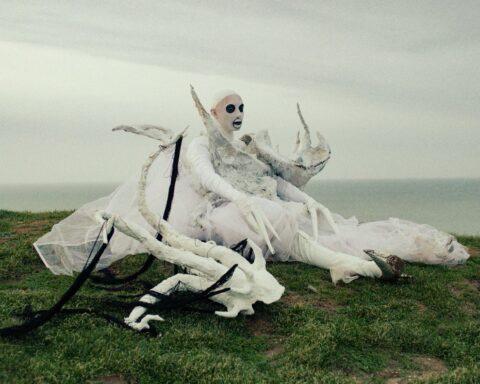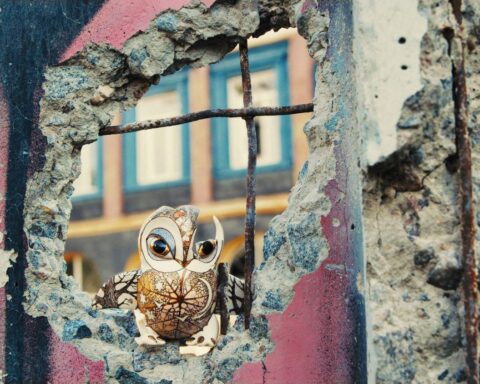Winter on Fire: Ukraine’s Fight for Freedom
(Ukraine/UK/USA, 102 min.)
Dir. Evgeny Afineevsky
“Do something for the revolution!”
“I’m filming.”
The above exchange occurs between two Ukrainians joining the battle for democracy in the powerful doc Winter on Fire: Ukraine’s Fight for Freedom. Winter on Fire shows how any individual can be an agent for change in the age of digital democracy. The camera is no longer a passive observer; rather, it’s an active participant and agent for change. This compelling film, which is currently an Oscar nominee for Best Documentary Feature after scooping the People’s Choice Award for documentary at last year’s Toronto International Film Festival, puts political power in the hands of ordinary citizens through the size and ease of new technology. As citizens band together and stand against a corrupt government, Winter on Fire captures visceral images from within the thick of a struggle and proves that the very deed of recording history is a vital political act. This doc is filmmaking from the front lines.
Winter on Fire offers an Occupy-era account in the vein of incendiary documentaries such as fellow Oscar nominee The Square and the overlooked powerhouse We Are Wisconsin. The film captures history as it unfolds thanks to some shrewd activists at the forefront of the movement, who were both participants in and witnesses to the occupation of Kiev’s Maidan Nezalezhnosti (aka Independence Square) that began in November 2013 when then-President Viktor Yanukovych reneged on a promise to make Ukraine a member of the European Union. Director Evgeny Afineevsky provides thorough context for the film through interviews with those brave activists. Their accounts relay with immediate emotional urgency the stakes involved in Ukraine’s membership in the EU and the collective awakening that the Russian-backed Yanukovych precipitated by stabbing his country in the back.
These perspectives provide the audience with the basic facts behind the story, but Winter on Fire doesn’t really need the primer since the footage from the ground is so immersive. The film chronicles the uprising of the people as ordinary citizens take a stand against Yanukovych’s corruption and join forces in a rally for their rights. These individuals are history makers and citizen journalists alike, as their commitment to telling their own story ensures 24/7 coverage of the occupation of the square. Everyone has the power to record the reality that the government distorts, and the active filmmakers on the battlefield in Winter on Fire record some astonishing footage. Making a movie like this takes as much courage and moxie as one needs to stand up against a rotten leader.
Winter on Fire reveals the scope of Yanukovych’s corruption as the subjects of the film confront police officers who brutally assault the protestors in violent altercations. The pulse-pounding footage plainly shows the police on the offensive as they ambush unarmed peaceful protestors. The cameras show abuses of power en masse as officers gleefully wail away on the protestors without provocation. The standoffs explode into a small-scale war as well-coordinated attacks on the occupiers attempt to demolish their feisty human spirit. In some cases, officers recognize the wrongheadedness of the State’s actions and cross the line to join the occupiers in the fight. Winter on Fire boldly portrays the need to defend one’s rights and dignity to the death.
As the film continues, the cameras capture the State going on the offensive with live ammunition as the anti-Yanukovych movement grows and the will of the people strengthens. Afineevsky and his team record numerous deaths as Ukrainians fall to the bullets of the State, in some cases as they try to save the wounded or move the bodies of the dead. Images from the film leave one shaken. (Perhaps just as upsetting is the realisation that although Yanukovych was deposed, Putin took advantage of the situation to seize back Crimea to Russia, furthering the chaos in the Ukraine.)
Afineevsky adds graphics and maps within the footage as Winter on Fire charts the movements of the protestors and the aggressors as each side advances throughout the city. The device adds to the film’s likening of the protest to a war as the images evoke battle plans for both sides. Winter on Fire displays the same immediacy that documentaries often do when activists and citizen journalists capture history as it unfolds. Making a film in the heat of the moment inevitably entails a coarse aesthetic as personally owned and operated cameras allow the filmmakers to infiltrate the scene to offer a fuller scope of the action. The rough and tumble nature of the film adds to the urgency of the images while the collage of footage captured by various participants gives the occupiers a collective voice in their own story.
Winter on Fire: Ukraine’s Fight for Freedom is currently streaming on Netflix.
p=.











